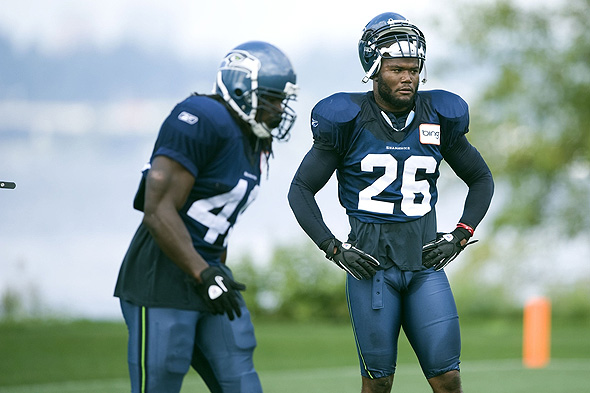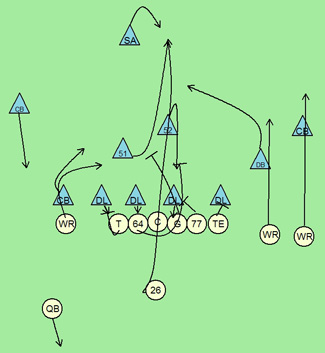
It would be an excellent version of aversion therapy for any Seahawks fan to be forced to watch the teams Senecat package, that misbegotten option package involving former backup quarterback Seneca Wallace. Generally, the plays were designed if you could call it that with Wallace as a runner, receiver or passer in different situations that would end with losses of anywhere from five to nine yards. Former offensive coordinator Greg Knapp didnt have the horses he had in Atlanta when he ran the read option with Michael Vick from 2004 through 2006, nor did he possess the creativity clearly held by the Miami Dolphins when they unleashed the actual Wildcat on an unsuspecting NFL in Week 3 of the 2008 season.
Sometimes, its just better to line up, execute, and smash your opponent in the mouth, trickeration or not. This was the case in last weeks 40-21 loss to the San Francisco 49ers, in which one of the few positive offensive plays came from a direct snap to fullback Michael Robinson. As we detailed in this weeks feature story, Robinson as done it all in the pros and at Penn State hes been a running quarterback, halfback, wide and slot receiver, and his current position with the Seahawks. So a direct snap to him, and given his history with what he told me were read plays as opposed to read-option (no second back to pitch to) might make more sense.
It wasnt really option; people have a misconception of that, Robinson recently said of what he did in college, throwing off the automatic designation that seems to come whenever a non-quarterback takes the ball from center. We probably ran the option maybe three times a game. Most of it was reading the defensive end, and it I kept it, I ran it. Option means youre pitching it to somebody. Its really more the read the read option is when youre reading that guy and you have someone to pitch it to. When I faked it, I kept it and went downhill, or I threw it from three- and four-wide sets. I dont know how to classify that offense maybe just more an Atlanta style?
 Whatever it was, we saw it with 14:14 left in the first half in San Francisco. Down 10-7, the Seahawks had the ball on third-and 4 from their own 30-yard line, and this was a rare example of Jeremy Bates’ short-yardage ingenuity paying off. The offense lined up in a fairly standard Senecat/Wildcat formation, with the runner taking a shotgun snap and the quarterback split wide in this case, Matt Hasselbeck was wide left and about five yards behind the line of scrimmage. The 49ers countered with a 4-2-5 set with five defensive backs.
Whatever it was, we saw it with 14:14 left in the first half in San Francisco. Down 10-7, the Seahawks had the ball on third-and 4 from their own 30-yard line, and this was a rare example of Jeremy Bates’ short-yardage ingenuity paying off. The offense lined up in a fairly standard Senecat/Wildcat formation, with the runner taking a shotgun snap and the quarterback split wide in this case, Matt Hasselbeck was wide left and about five yards behind the line of scrimmage. The 49ers countered with a 4-2-5 set with five defensive backs.
At the snap, left guard Mike Gibson (64) pulled right and got to the second level to deal with linebacker Patrick Willis (52) it was the decisive move of the play. At the same time, right guard Stacy Andrews (77) down-blocked to his left, only to slip off and block linebacker Takeo Spikes (51). After a very quick fake pitch look to Hasselbeck, Robinson slid through the alley opened up by his two guards and ran for a clear 15 yards before Spikes, who had moved off Andrews block and run downfield.
Its important to remember that Robinson was a member of the 49ers team from the 2006 NFL draft until his release in early September of 2010. Everyone on that defense knew what was coming nobody really expected a sweep handoff to Ruvell Martin or a seam route to Matt Hasselbeck and it was the blocking of the guards on the linebackers that facilitated this play far more than any edge the offense may have gained with a more complex (and surely more risky) concept.
This play was an outstanding combination of design and execution, and no matter what happens to the Seahawks playoff chances down the stretch, it would be wise for them to roll this one out again.
